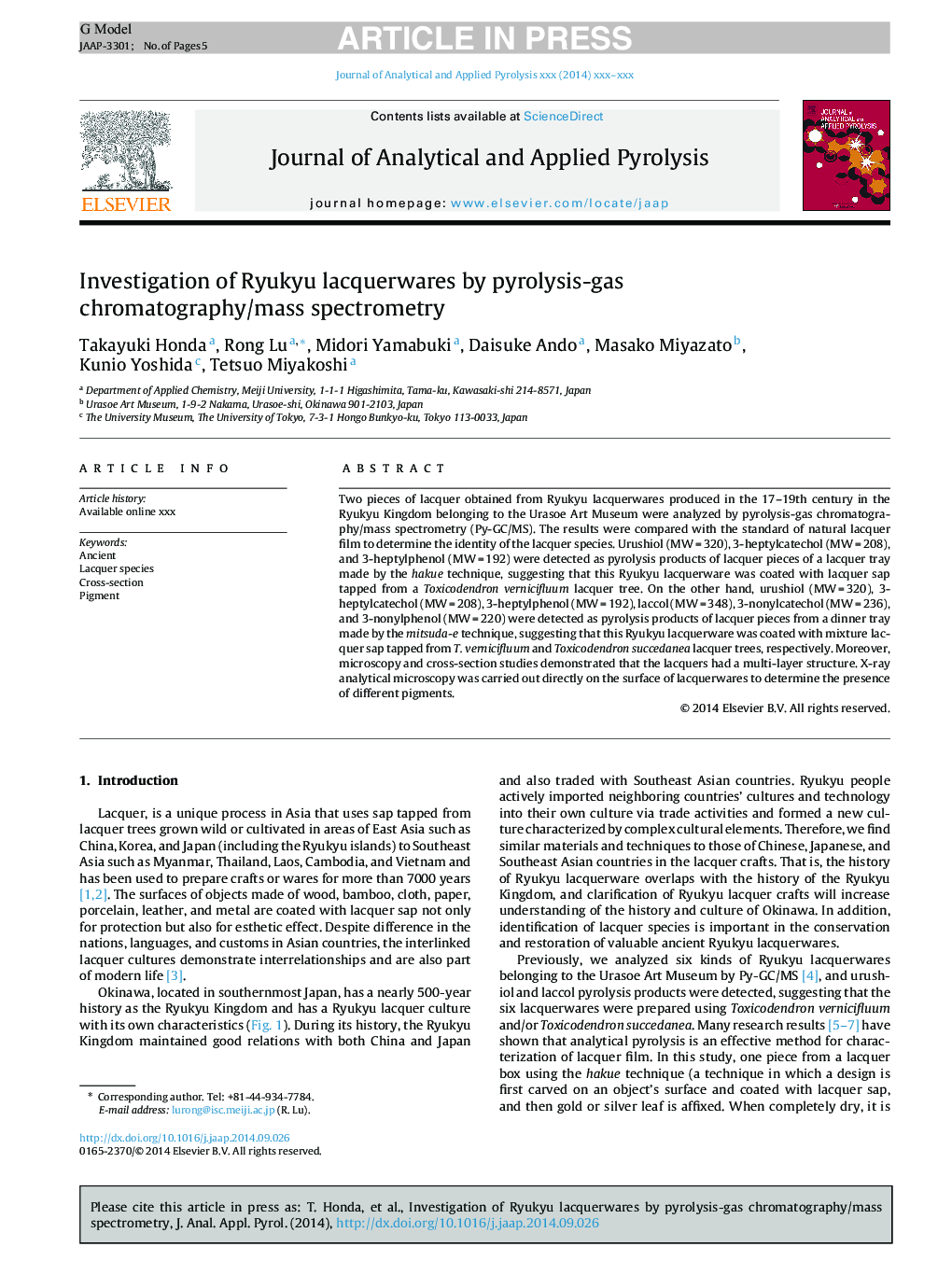| Article ID | Journal | Published Year | Pages | File Type |
|---|---|---|---|---|
| 7606614 | Journal of Analytical and Applied Pyrolysis | 2015 | 5 Pages |
Abstract
Two pieces of lacquer obtained from Ryukyu lacquerwares produced in the 17-19th century in the Ryukyu Kingdom belonging to the Urasoe Art Museum were analyzed by pyrolysis-gas chromatography/mass spectrometry (Py-GC/MS). The results were compared with the standard of natural lacquer film to determine the identity of the lacquer species. Urushiol (MWÂ =Â 320), 3-heptylcatechol (MWÂ =Â 208), and 3-heptylphenol (MWÂ =Â 192) were detected as pyrolysis products of lacquer pieces of a lacquer tray made by the hakue technique, suggesting that this Ryukyu lacquerware was coated with lacquer sap tapped from a Toxicodendron vernicifluum lacquer tree. On the other hand, urushiol (MWÂ =Â 320), 3-heptylcatechol (MWÂ =Â 208), 3-heptylphenol (MWÂ =Â 192), laccol (MWÂ =Â 348), 3-nonylcatechol (MWÂ =Â 236), and 3-nonylphenol (MWÂ =Â 220) were detected as pyrolysis products of lacquer pieces from a dinner tray made by the mitsuda-e technique, suggesting that this Ryukyu lacquerware was coated with mixture lacquer sap tapped from T. vernicifluum and Toxicodendron succedanea lacquer trees, respectively. Moreover, microscopy and cross-section studies demonstrated that the lacquers had a multi-layer structure. X-ray analytical microscopy was carried out directly on the surface of lacquerwares to determine the presence of different pigments.
Keywords
Related Topics
Physical Sciences and Engineering
Chemistry
Analytical Chemistry
Authors
Takayuki Honda, Rong Lu, Midori Yamabuki, Daisuke Ando, Masako Miyazato, Kunio Yoshida, Tetsuo Miyakoshi,
